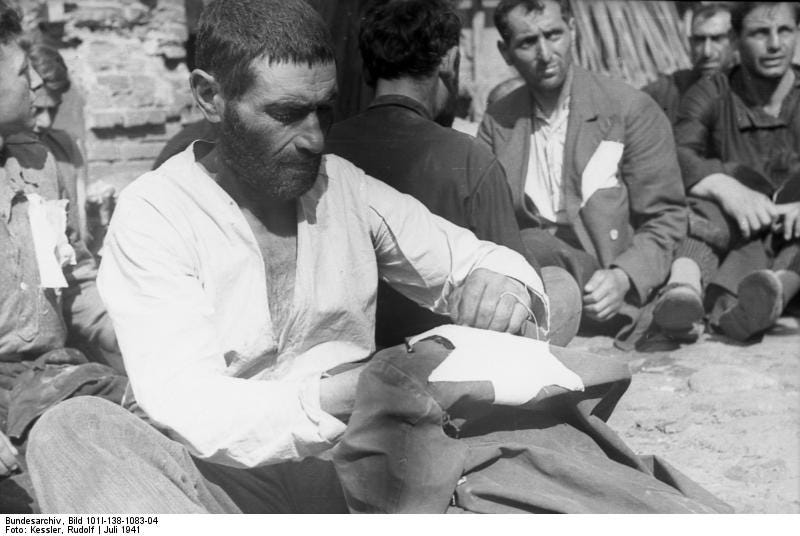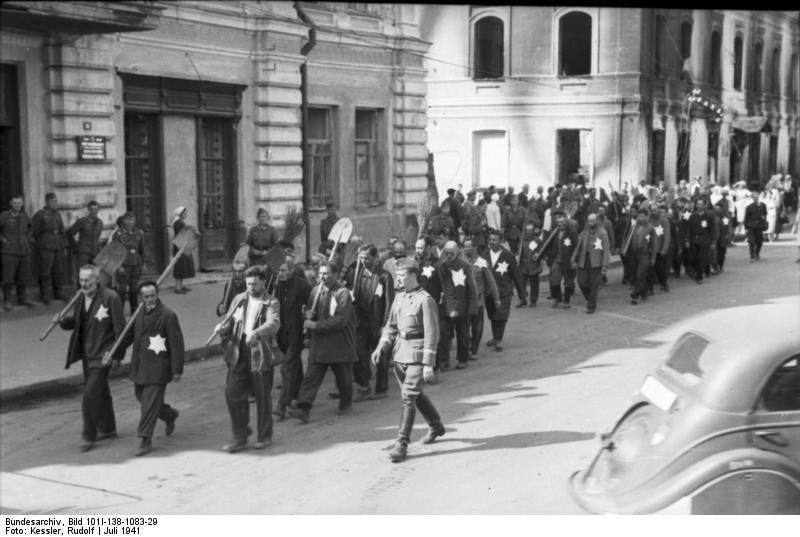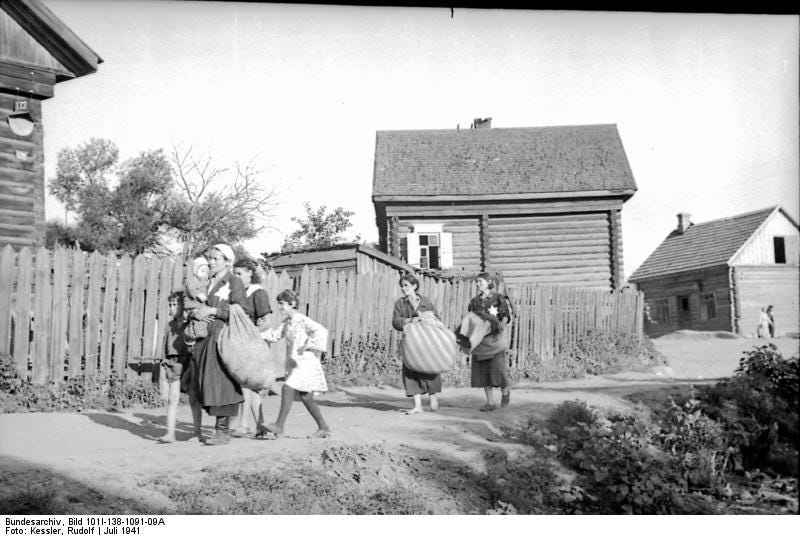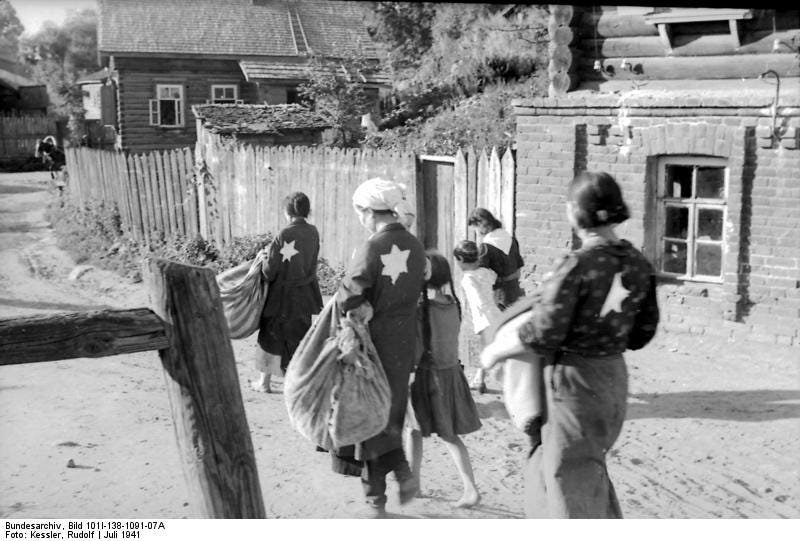The last pictures of the Jews of Mogilev
27th July 1941: Wehrmacht documents first steps in the "Holocaust by bullets"

As the German Army moved further east in Soviet Russia they were followed by the SS Einsatzgruppen. These ‘special groups’ were responsible for leading the ‘holocaust by bullets’. In the more rural areas they were going from village to village shooting all the known Jews they could find. Surviving reports and diaries are very clear about what was happening.
In larger towns and cities the Jews were evicted from their homes and forced into crowded ghettos, where they were slowly starved. Some were used as forced labour - but it was only a temporary reprieve.
On the 26th July 1941 the Germans captured the city of Mogilev, a district capital in what is now Belarus. About 50% of the inhabitants were Jewish, part of an ancient community that dated back to the 14th century. In these areas it was possible for some Jews to escape east before the advancing Wehrmacht reached them - perhaps 40% moved out of Mogilev in time.
There were still around 12,000 Jews left in Mogilev.
A Wehrmacht propaganda company photographer, Rudolf Kessler, was on hand to take a series of photographs of the treatment of the Jews immediately after the occupation of the city. There are only the most basic descriptive captions to accompany these.
At this stage the Nazi regime was proud of its treatment of the Jews - except that they were not taking propaganda pictures of the mass murders. The pictures taken here may have been intended to present a slightly more benign interpretation of how the Jews were being treated.



Later in the day people are evicted from their homes. These barefoot peasants were the 'enemies of the Reich'.
The whole process is depicted as being conducted in an orderly manner with no violence. As such these images cannot be taken as typical of how events like this were usually carried out.
The pictures show that the Jews being evicted from their homes but other accounts suggest that they were not forced into a Labour Camp until ‘the end of summer’. The ‘Labour Camp’ was itself just a temporary stay of execution.
Ultimately the fate of the Jews of Mogilev was no different from hundreds of thousands of others in the region.
The Zwangsarbeitslager [Forced Labour Camp] in Mogilev was created shortly after the German occupation at the end of summer. The Jewish artisans from Mogilev and nearby areas were detained in this camp along with some Russian partisans. They slept inside the former Dimitrov factory. The camp was surrounded with double barbed wire and four guard posts.
The auxiliary Ukrainian police conducted the shooting of women and children in a very cruel manner. Under the influence of alcohol, they fired at the victims without aiming.
The Jewish inmates were separated from thr Russians. The Jews had distinguishing armbands. Several workshops, including a sewing workshop with thirty sewing machines, tannery, carpentry, and goldsmithery, were set in a big room. The primitive sleeping area was located on the ground floor, over the workshops.
The chief of each workshop guarded his companions in misery. They were called Kapos and were subordinate to the Lagerführer. They had to beat and denounce the other inmates. During the shooting, they were shot the last.
The auxiliary Ukrainian police conducted the shooting of women and children in a very cruel manner. Under the influence of alcohol, they fired at the victims without aiming. At least 2,000 Jews were shot during this extermination Aktion.1
The report of the public prosecutor within the trial of the Schutzpolizei of the Police Bataillon n°52; B162-7602 p.19 - https://www.yahadmap.org/#village/mogilev-moguilev-mahilyow-mogilev-belarus.425
Bundesarchive images licensed under the Creative CommonsAttribution-Share Alike 3.0 Germany license.











Read The Holocaust Narrative by E. Michael Jones. fidelitypress.org
Liars vs. Deniers https://www.bitchute.com/video/lw32IUVNoUqA/